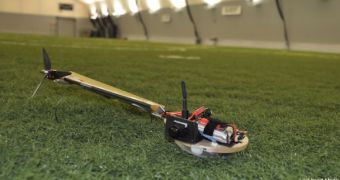This may not be the strangest thing we've had the chance of writing about in our news articles and blogs, but it comes really close, even among robots and nuclear reactors owned by photo film companies.
Lockheed Martin has created something that could make spy planes obsolete or humans scream and flee in terror, or both.
What is ironic is that said “something” was inspired from a certain part of the natural ecosystem, a fairly benign one too: seeds. Maple seeds, to be specific.
People probably know of them: the strange things, resembling lone wings, that flutter, spin even, from branches to the ground, during fall.
Lockheed Martin's Samarai are drones that can recreate that motion. What's more, they can spin fast enough that they can do more than glide. They outright fly.
By influencing the speed of the spin, those controlling the Samarai (wirelessly) can make them ascend, descend, follow certain trajectories. Basically, they are Sci Fi mini-drones in every sense of the word.
The initial model measures 30 centimeters, but the newest one is smaller, at 17 cm in length. That's 11.81 and 6.69 inches, respectively.
The purpose of the drones is to remove the necessity for spy planes and other large instruments of snooping around.
Since Samarai are supposed to be cheap and easy to make, the cost of deploying a swarm of them should be insignificant, or close enough. We can only imagine what sight they would be, in the thousands, tilting and panning in concert.
Interestingly, the camera mounted on the drones doesn't actually move. Instead, the constant motion of the craft is passed through algorithms that de-rotate the video and turn it back into a frame-by-frame view.
Unfortunately, Lockheed hasn't disclosed potential flight times and range, not for the battery-powered and not for the carbon-fuel-powered versions either. Right now, efforts are focused on further size reduction.

 14 DAY TRIAL //
14 DAY TRIAL // 